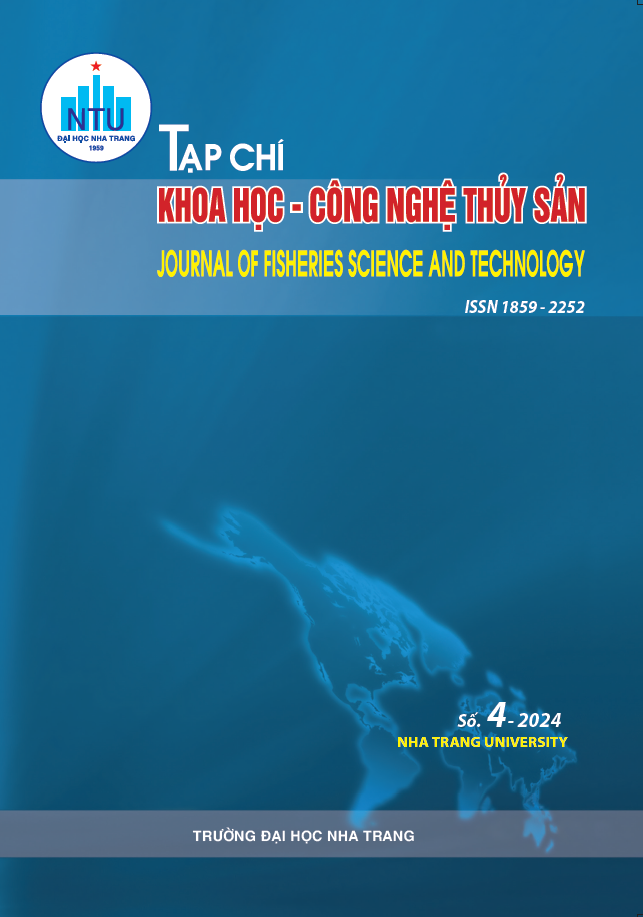##plugins.themes.huaf_theme.article.main##
Tóm tắt
Nghiên cứu này thực hiện nhằm đánh giá ảnh hưởng của mật độ nuôi đến sinh trưởng, hệ số thức ăn (FCR) và tỷ lệ sống của cá bè vẫu trong điều kiện nuôi ở biển. Cá bè vẫu giống (khối lượng 4,8- 6,3 g/con; chiều dài 5,3-6,7 cm) được bố trí ngẫu nhiên vào hệ thống giai (kích thước 2×2×2,5 m) được lắp đặt trong hệ thống lồng bè trên biển, với 3 nghiệm thức về mật độ là 20; 25 và 30 con/m3. Mỗi nghiệm thức có 3 lần lặp. Cá được cho ăn thức ăn công nghiệp dạng chìm chậm (46% protein, 10% lipid), với 3 lần/ngày trong thời gian 90 ngày. Kết quả cho thấy mật độ nuôi ảnh hưởng đến tốc độ tăng trưởng về chiều dài khối lượng, hệ số thức ăn và tỷ lệ sống của cá bè vẫu (P<0,05). Mật độ nuôi cao 30 con/m3 cho kết quả tăng trưởng, và tỷ lệ sống thấp nhất, nhưng hệ số thức ăn (FCR) cao nhất. Trong khi đó, tăng trưởng, FCR và tỷ lệ sống của cá bè vẫu ở hai nghiệm thức 20 và 25 con/m3 sai khác không có ý nghĩa thống kê (P>0.05). Các kết quả trên cho thấy ở giai đoạn nuôi này mật độ thả giống cá bè vẫu từ 25 con/m3 trở xuống là phù hợp trong nuôi lồng
Từ khoá: Cá bè vẫu, mật độ, tăng trưởng, tỷ lệ sống
Abstract
The aim of this study was to determine the effects of rearing density on growth, survival rate and food conversion ratio of juvenile giant trevally in seacages. Juvenile giant trevally (body weight of 4.8- 6.3 g; total length of 5.3-6.7 cm) were randomly assigned to nine hapas (2×2×2.5 m) fixed in seacages with three rearing densities, including 20; 25 và 30 individuals/m3. Each rearing density was run in triplicate hapas. The fish were fed ad libitum by hand with a commercial slow-sinking pellets (46% protein, 10% lipid, three times a day, for a period of 90 days. Results from the present experiment indicated that rearing density affected growth in body weight and body length, FCR and survival rate in giant travelly (P<0.05). Giant trevally reared at density of 30 individuals/m3 showed lower growth and survival rate, but higher FCR compared to other two rearing densities. Meanwhile, no significances in growth, FCR and survival rate were observed between the fish groups reared at 20 và 25 individuals/m3. These results indicate that an stocking density up to 25 individuals/m3 is suitable for seacage farming of the giant trevally.
Key words: Caranx ignobilis, rearing density, growth performance, survival rate

